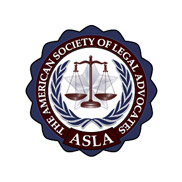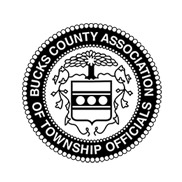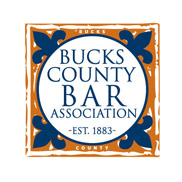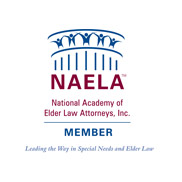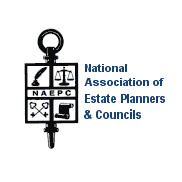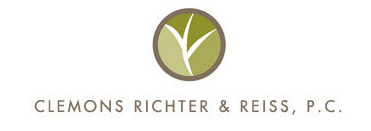Up in Smoke – Regulating Smoking in Condo & Community Associations
As governmental regulations against exposure to second hand smoke continue to increase, condominium and homeowner associations struggle with the extent to which they are required and or permitted to regulate smoking. Absent a clear and outright smoking ban contained in either the declaration or the bylaws, boards question their authority to adopt rules against smoking and exposure to smoke. And, while associations are named as defendants in cases that seek action when owners complain of second hand smoke entering units, the obligation to intervene may arise even without clear guidelines.
Although smoking is rarely addressed in a declaration, boards are generally authorized to adopt by rule and regulation, a prohibition on smoking in common areas such as the clubhouse, pool, and other public gathering places. Such rules are clearly reasonable and do not interfere with an individual unit owner’s right to use and enjoy his or her individual unit. Controversy may arise, however, when such rules attempt to restrict conduct on limited common elements such as patios and entrance stoops, or indeed within individual units. While use of specific components (common elements, limited common elements and units) may be subject to the rule making authority of an association, the greater a rule’s impact on the owner’s conduct in their “personal space”, the more likely it is that a challenge will be posed.
The source of a board’s authority to govern use and occupancy are typically governed by the declaration. For example, a declaration may provide the following:
Use Restrictions.
(a) Each Unit and the Owner and occupant of each Unit shall be subject to the following restrictions and to Rules and Regulations as may be adopted by the Board of Directors governing use and occupancy of Units, Limited Common Elements and Common Elements, and the conduct of the Owners and their guests thereon and therein.
(b) No part of the Property shall be used so as to create a nuisance or an unreasonable interference with the peaceful possession and occupation or proper use of any other Units, Limited Common Elements and Common Elements.
(c) Each Unit and the Limited Common Elements assigned thereto shall be maintained by its Owner or occupant in a safe, clean and sanitary manner and condition, in good order and repair and in accordance with all applicable restrictions, conditions, ordinances, codes and any rules or regulations as may be applicable hereunder or under law.
(d) No Owner or occupant of any Unit shall carry on, or permit to be carried on, any practice which unreasonably interferes with the quiet enjoyment and proper use of another Units, Limited Common Elements and Common Elements by the Owner or occupant of any Unit, or which creates or results in a hazard or nuisance on the Property.
In this example, the board’s rule-making power clearly extends to conduct within units, which would appear to encompass smoking affecting other owners. In addition, even if a specific rule concerning second-hand smoke has not been adopted, the board could address smoking to the extent it constitutes a “nuisance” or interference with the “peaceful possession” or “quiet enjoyment” of any unit. The degree to which a board is expressly empowered to take certain action, however, is document specific. Consider the following provision: The Owner’s use and occupancy of the property shall be subject to:
The right of the association to establish rules and regulations governing the use of the community facilities and open space.
While this example confirms the board’s power to adopt smoking rules in common areas, it does not address conduct within units. Boards should thus review the association’s governing documents to avoid exceeding their authority.
Research has not revealed any cases which address an association’s power to ban smoking within units by board adopted rule. A rule banning smoking anywhere within an association, including within any unit, could be subject to challenge unless particular harm can be shown. For that reason, unless such authority is clearly stated, a complete ban on smoking within units is perhaps best accomplished through an amendment to the Declaration. Courts generally prefer restrictions created by vote of the unit owners over those imposed merely by a board of directors.
In the absence of specific rules, boards have sought to address smoking (and have been sued to compel them to do so) pursuant to catch-all nuisance provisions. A number of other jurisdictions have addressed the issue of whether second hand smoke is a “nuisance”. Something may constitute a nuisance either because a governmental agency has declared it as such, or because it interferes with the rights of the public.
A thing may be a public nuisance because it is so declared by statute, either explicitly or implicitly. Alternatively, it may be declared a nuisance as a matter of common law if, though not prohibited by statute, it unreasonably interferes with the rights of the public. Commonwealth v. MacDonald 464 Pa. 435, 347 A.2d 290 (1975).
In other words, certain conduct may be deemed a nuisance by statute and is thus considered a nuisance per se. For example, the Pennsylvania Clean Indoor Air Act (35 P.S. 637.2) prohibits smoking in “public places”, which as a result is considered a nuisance per se. This distinction is important because per se nuisances do not require proof that the particular behavior or “thing” interferes with a public right; instead, it is deemed to interfere and may thus be enforced without a showing of harm.
More specifically, the Indoor Air Act provides as follows:
(a) General rule.–Except as set forth under subsection (b), an individual may not engage in smoking in a public place. Nothing in this act shall preclude the owner of a public or private property from prohibiting smoking on the property.
(b) Exceptions.–Subsection (a) shall not apply to any of the following:
(1) A private home, private residence or private vehicle unless the private home, private residence or private vehicle is being used at the time for the provision of child-care services, adult day-care services or services related to the care of children and youth in State or county custody.
“Public place.” An enclosed area which serves as a workplace, commercial establishment or an area where the public is invited or permitted. The term includes:
… (4) A public facility. This paragraph includes a facility to which the public is invited or in which the public is permitted and a private home which provides child-care or adult day-care services.
Smoking in private homes or private residences has thus NOT (yet) by statute been declared to constitute a nuisance, and must therefore rise to the level of “interference with a public right” in order to be actionable. Generally, a nuisance is the invasion of another’s interest in the use and enjoyment of their land. Harford Penn–Cann Service, Inc. v. Zymblosky, 378 Pa.Super. 578, 549 A.2d 208 (1988). This Commonwealth follows the Restatement (Second) of Torts’ definition of private nuisance. See Karpiak v. Russo, 450 Pa.Super. 471, 676 A.2d 270 (1996). Section 822 provides:
One is subject to liability for a private nuisance if, but only if, his conduct is a legal cause of an invasion of another’s interest in the private use and enjoyment of land, and the invasion is either
(a) intentional and unreasonable, or
(b) unintentional and otherwise actionable under the rules controlling liability for negligent or reckless conduct, or for abnormally dangerous conditions or activities.
Rest.2d Torts § 822, General Rule. The Restatement indicates that a defendant is not subject to liability for an invasion unless it resulted in a significant harm to the complaining party. Karpiak, supra at 272. Significant harm is defined as “harm, of a kind that would be suffered by a normal person in the community or by property in normal condition and used for a normal purpose.” Rest.2d Torts § 821F. See Dumm v. Dahl, 913 A.2d 863, 2006 PA Super 326.
Whether smoking within a unit rises to the level of nuisance will thus depend upon the circumstances; and will therefore require case-by-case analysis. In the Maryland case of Schuman v. Greenbelt Homes, an owner sued his association and next door neighbor for various claims arising from secondhand cigarette smoke that entered his patio and home. In ruling against Mr. Schuman, the court refused to consider smoking a “nuisance per se”, deferring such a determination to the legislature. In addition, the court wrote as follows:
Again, we acknowledge that cigarette smoke and its harmful effects is an extremely serious issue. But the extent of the exposure necessary to cause harm is an evolving area. In this case, no expert could testify that Schuman did or did not suffer any significant injury from second hand smoke. One expert testified that there is no specific likelihood that Schuman will develop a disease from second hand smoke. The Court of Appeals has explained that “testimony concerning an injury which may only possibly ensue is something too conjectural for the jury to receive or consider”.
In Schuman, the court found that the harm suffered by the plaintiff was not sufficiently severe, and that the causal relation between the smoke and the claimed ailments was too attenuated – a decision was thus rendered in favor of the Association and the (smoking) neighbor. A similar result was reached in the Maine case of America v. Sunspray Condominium Association. In America, the plaintiff sued his association and the members of the board for their failure to enforce a smoking ban created by rule. Holding that the plaintiff had failed to plead facts evidencing an injury or particular harm, the court dismissed all claims and found in favor of the association. Specifically, it rejected the argument that because smoking is universally understood to be harmful, an affected party has an automatic right to relief. As in Schuman, the Court in America required showing of a specific injury or harm as a condition to recovery under the state’s nuisance theory. In both these cases, the plaintiffs were unable to prove such injury or harm. In a New York case known as Ewen v. Maccherone, an owner sought to recover damages from his condominium association, again under the theory of private nuisance. In rejecting the plaintiff’s argument, the court in Ewen wrote as follows:
Indeed, the law of private nuisance would be stretched beyond its breaking point if we were to allow a means of recovering damages when a neighbor merely smokes inside his or her own apartment in a multiple dwelling building… To the extent odors emanating from a smoker’s apartment may generally be considered annoying and uncomfortable to reasonable or ordinary persons, they are but one of the annoyances one must endure in a multiple dwelling building.
Schumann, America and Ewen illustrate that the law of nuisance can only support claims where actual injury or harm is shown. Notwithstanding the results of these cases, it is certainly possible that a particular plaintiff will meet the required burden under more severe or different circumstances. In California, the plaintiff in Chauncey v. Bella Palermo Homeowners Association sued the association when it failed to address “incessant” smoke which was entering their unit and aggravated their son’s asthma. While Chauncey is not an appellate case, available reports state that the claim was brought under a nuisance theory, particularly the association’s failure to respond to repeated requests for action. Chauncey proceeded to a jury which found that the association should have taken preventive action, and that its failure to do so made it liable to the plaintiff. As of the date of this article, the plaintiff was awarded $15,000.00.
Clearly, this area of the law continues to evolve. Until the legislature steps in and prohibits smoking inside multi-dwelling private residences, condominium associations may address smoking by reasonable rule and regulation or amendment to their recorded governing documents. The adoption, implementation, and enforcement of rules and regulations is generally protected by the business judgment rule (courts will not review actions of a governing body of an association as long as those actions are authorized, and do not constitute bad faith, fraud, or self-dealing). Whether proceeding by rule and regulation or by amendment to the declaration, adopting a total ban will require grandfathering of current smokers and creation of procedures for monitoring compliance. And, with legalization of medical marijuana looming in the Pennsylvania legislature, provisions may have to be made for reasonable accommodations.
However, adoption and enforcement of rules may not be sufficient when there is a claim of particular, unusual and actual harm. Under those circumstances, an association may have a duty to investigate and to potentially prevent the cause of actual harm, even when such conduct is not expressly prohibited. Of course, what response is appropriate will depend upon the particular facts – important is that Boards respond, act reasonably, and in good faith.
This article is not legal advice and is provided for informational purposes only. Actual legal advice can only be provided after consultation by an attorney licensed in your jurisdiction.

